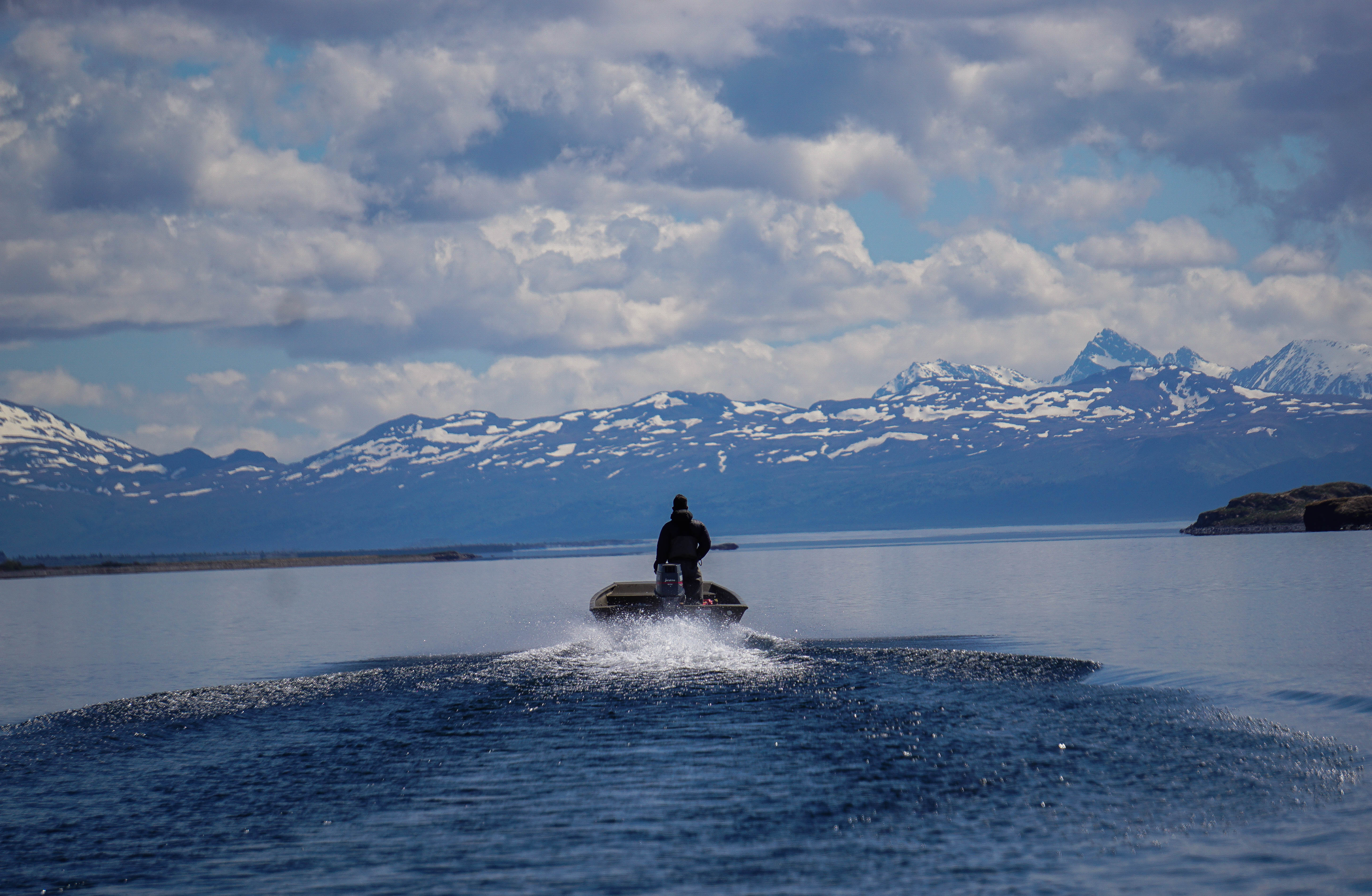By Karl Schultz, Josh Greiser, Pete Lyford, John Messick, Maggie Harings, Jon Heifetz, Kevin Miller and Jake Fleetwood
With tourist season winding down, Alaska residents flock to public lands to enjoy the best our state has to offer. With fewer people along our riverbanks and trails, the rush to fill our freezers before the snow flies is on. Hunting season is open across the state, fresh silver salmon are still pouring into many rivers, and resident rainbow trout and char are bulking up, all making for unforgettable days afield.
Beyond being a favorite for Alaska’s sportsmen and women, this September we celebrated Public Lands Month, when Americans from every corner, background and user group rejoice in the simple fact that more than a fourth of lands in our country are open for any of us to enjoy. With more than 325 million acres of state and federal public land, or nearly 90 percent of our state, Alaska is home to more than a third of America’s public lands.
As outdoorsmen and women of the 49th state, we celebrated last—and every—month by exploring places new and old and by thanking those who made this reality possible. This means acknowledging indigenous peoples who were the first stewards of the land and who had the wisdom and foresight to use it wisely so that it’s available now for all to enjoy. It also means recognizing that regardless of our backgrounds and motivation for conserving public lands, we do so best as unified and inclusive advocates.
Beyond these critical first steps, we know that properly celebrating our public lands means both enjoying and acting. It’s not only lacing up your boots, it’s picking up the phone or writing a letter to support conserving our favorite wild places when they need help. Acting on behalf of public lands means helping to maintain both access to them, as well as their health and integrity.
Explorers, hunters, anglers, hikers, climbers, campers and s’mores artists alike benefit from the bounty of Alaska’s public lands for some of our best memories, the fullness of our chest freezers, or our most engaging tales of misadventure. As such, we assume the responsibility of being active stewards of the land and ethical facilitators when introducing new participants to pursuits on our national commons.
With so much space to roam at our disposal in Alaska it can be difficult for individuals to notice harm, especially as many places are smartly managed for multiple uses. This does however become a serious problem to hunters and anglers when land is privatized, barring access. Or, when water and habitat are degraded by activities of various land leases.
Over 3 million lakes, rivers, and streams ebb and flow throughout Alaska, posing a vital source of life and migratory highways for fish and game that transect lands held by a variety of landowners. Though our waterways are plentiful, transfer or privatization of public lands is theft from the American people. And splitting off chunks little bits at a time will erode the basis of what makes Alaska unique.
Since we have a large, and mostly undeveloped state, there are many who seek to develop these places at our expense—literally by spending our taxpayer dollars, and figuratively, as we — the residents — are often the ones left to pay the cleanup bill once the developer has taken the land out of our trust, scarred it, and left it to us to deal with.
Much like the population and health of the fish and game we chase, public lands management is a long-term game requiring planning and lots of diverse advocates. We need advocates who think beyond this season, and instead think about seasons, decades or even centuries from now. How do we want our state to look for future generations? We need public land users who think about what they can do to ensure their children’s children can learn to fish, hunt and explore like our parents and grandparents taught us.
Ultimately, whether you use them or not, you are a public landowner. This means it’s up to you to help ensure we collectively pass those lands down to the next generation with the pride that comes from good caretaking and plenty of good stories to tell.
To learn how to get involved with Trout Unlimited, contact your local chapter leader or visit tu.org. The latest actions can be found at standup.tu.org.
Karl Schultz, Josh Grieser, and Pete Lyford are board members of the Southcentral Alaska Chapter of Trout Unlimited and reside in Anchorage and Wasilla. John Messick and Maggie Harings are the board chairs of the Kenai Peninsula Chapter of Trout Unlimited and reside in Soldotna. Jon Heifetz, Kevin Miller, and Jake Fleetwood are board members of the Tongass Chapter of Trout Unlimited and reside in Juneau and Douglas.



